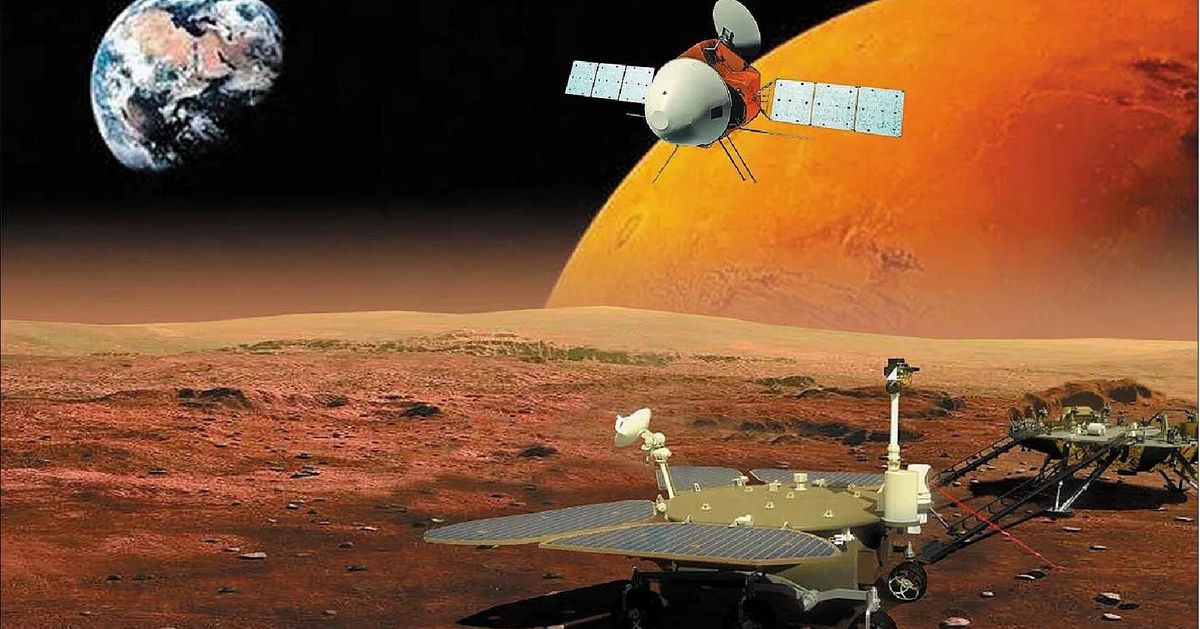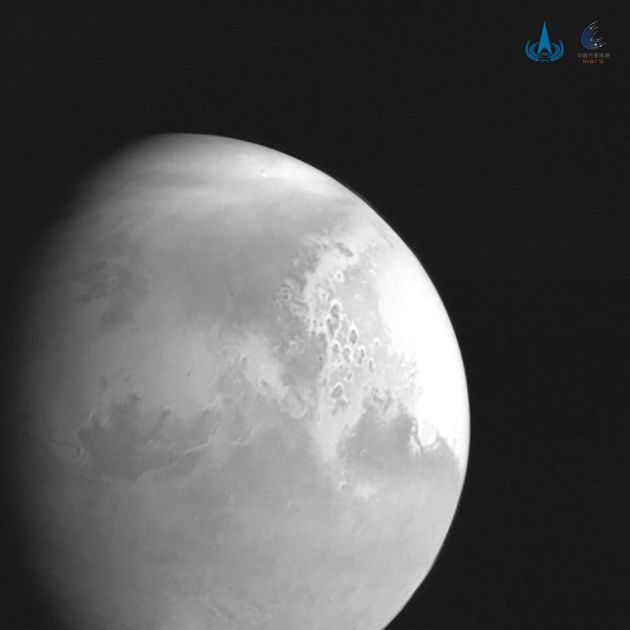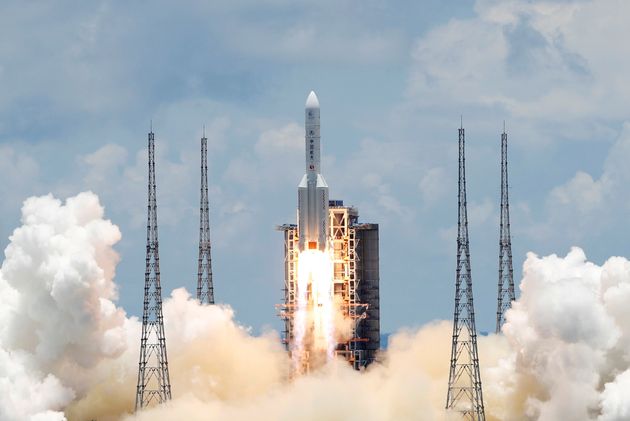Credits: CNSA
SPACE – It’s China’s turn to join the ballet of spacecraft bound for Mars. 24 hours after the United Arab Emirates’ Hope probe, Tianwen-1 is carrying out its orbit around the red planet this Wednesday, February 10, a week before the arrival of NASA’s Perseverance rover scheduled for February 18.
The race to explore Mars is now open, especially between China and the United States. With the ambition for the Chinese authorities to surpass the Americans within 10 years by being the first country to manage to bring back to Earth Martian samples.
For now, Tianwen-1 will stay in orbit for 3 months. The probe is made up of an orbiter, a lander and a rover. The orbiter’s mission will be to “check the landing site” of the rover explained to the Huffpost Athena Coustenis, astrophysicist and research director at CNRS.
For Tianwen-1, this involves mapping Mars using its measuring instruments, a radar capable of analyzing soils and high resolution cameras. Superb images of the planet have already been taken during the probe’s approach phase.
–
CNSA/PEC (Planetary Exploration of China))
Finding life on Mars
Once the place of arrival has been determined, Tianwen-1’s main mission, the deployment of the rover on Martian soil, can begin. Provided, of course, that the landing goes as planned. “The failure rate of Martian missions is 50%,” warns Dr Athena Coustenis. In 2012, China had already tried unsuccessfully to send the Yinghuo-1 probe to Mars.
A possible landing site for Tianwen-1 could be the plain of Utopia Planitia, already visited by the American probe Viking 2 in 1976. The region is geologically interesting because it would contain significant quantities of underground ice. Some scientists even wonder if the dust of Utopia Planitia might not contain traces of life.
“Finding evidence of life on Mars,” says Athena Coustenis, is an important goal for Tianwen-1. In addition, the Chinese mission will also aim to collect data on the atmosphere and geology that will improve our knowledge of the planet.
Still, the scientific fallout from the Chinese mission could be uncertain. Speaking to the Huffpost Francis Rocard, head of the solar system exploration program at CNES, reveals that the scientific instruments on board Tianwen-1 are “not as efficient” as those used during American missions.
China is technologically catching up with the West
The objectives of the Tianwen-1 mission are nonetheless “very ambitious”, explains Athena Coustenis. This is because China, explains the astrophysicist, wants to position itself as a “challenger” and play in the big leagues of space that are “the United States, Russia and Europe” by catching up in one. mission all behind other nations.
Beijing “designed everything, made everything itself”, points out Athena Coustenis. The Chinese space program prides itself on being autonomous from a technological point of view. Even if, arriving on Mars 40 years after the Americans and the Russians, China was able to benefit from “knowledge of the space programs of other countries”, tempers the director of the CNRS.
It is because the question of space is closely supervised by the Chinese government. The manufacturer of Chinese spacecraft, the China Aerospace Science and Technology Corporation (CASC), is not steered by a scientific committee as is the case for other countries, emphasizes Athena Coustenis, but directly by the state that wants to be “Ready to put the necessary means”, indicates the professor.
This political control of space issues sometimes comes at the expense of scientific collaboration. “There are cumbersome and slowness in exchanges with scientists who must validate their communications,” deplores Athena Coustenis.
–
Carlos Garcia Rawlins / Reuters
Returning samples from Mars to Earth
If the Chinese government is so involved in the direction of its space program, it is because there is a “healthy competition” between the great powers in space, explains Athena Coustenis, ”like what s ‘happened during the Cold War. ”
This time, the object of the competition seems to be to succeed in repatriating Martian samples to Earth. ESA and NASA are planning a joint mission in this direction for 2031, as is China for 2030.
The Tianwen-1 mission is a key step for a next mission to return samples. One of the objectives of the Chinese probe’s orbiter is moreover to identify a site likely to be suitable for such a mission.
China can also count on the experience gained during its Chang’e lunar missions during which Chinese scientists succeeded in repatriating rocks from the moon to Earth.
But the Chinese success is still hypothetical and catching up in a decade for the lead taken by NASA on sample return missions will not be easy. “It is an ambitious project that the Americans have taken 40 years to implement” recalls Doctor Francis Rocard.
The Tianwen-1 mission will already have to go perfectly. Then that China succeeds in developing its new range of Long March 9 interplanetary launchers, explains the astronomy site planetary.org. Being able to send probes to Mars that can extract and return samples to Earth requires rockets much more powerful than those currently used. “The launchers that China plans to use to send taikonauts to the moon” could be used for this purpose, explains Francis Rocard.
The proposed launchers will measure 100 meters high and 10 meters wide. A technology that can only be tested in 2030 according to the site spacenews, or just in time to meet the schedule for a mission with return of Martian samples. The race to Mars has only just begun and will be full of obstacles.
See also on The HuffPost: NASA’s Perseverance rover takes off, heading for Mars
–
–




